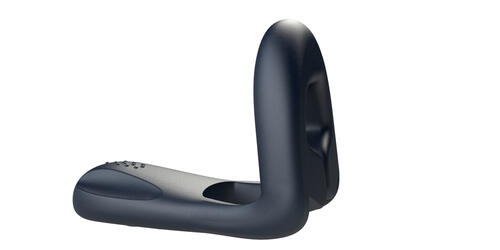 BACK TO HOMEPAGE >
BACK TO HOMEPAGE >

Tenuto 2 - Adaptable Wearable Vibrator for ED | 2022
Designers: Soum Rakshit, Rob Weekly, Shanshan Xu, and Dave Heywood, MysteryVibe Limited, Puttenham, Surrey, United Kingdom
Manufacturer: MysteryVibe Limited, Puttenham, Surrey, United Kingdom
Tenuto 2 is an award-winning FDA-registered medical device that provides an alternative solution for erectile dysfunction at all stages of life. This smart wearable vibrating device for men is the world’s first of its kind bendable device, offering an affordable, accessible solution without the side effects of medication.
One of its key aims is to help those with underlying health conditions who cannot take medication or suffer from ED due to post colorectal cancer, post-prostatectomy, back injury, or vascular disorders. Tenuto 2’s patented technology utilizes localized vibrational therapy to promote blood circulation, resulting in firmer, fuller erections. Its body-adapting material allows the device to sit tightly at the base of the penis and constrict the blood flow to maintain the erection comfortably. Tenuto 2’s four strategically placed motors and sixteen intensity settings deliver multi-targeted vibrations around the penis and perineum to increased blood flow, extended erections, prolonged pleasure, and provide simultaneous stimulation to a partner’s vulva.
This advancement is significant for couples struggling with intercourse, due to erection issues and vaginal dryness or arousal disorder. Tenuto 2’s militarymedical-grade material gives the user a fully customizable experience with flexible, body-adaptability that fits most penis sizes, flaccid and erect. Tenuto 2 also comes with a free smartphone app that enables the user to set the vibration pattern and intensity that is most suitable for them.
Tenuto was trialed in a medical case study, and the study kicks off a series of initiatives to establish the device’s effectiveness and validity at improving erectile function under different conditions. The study focuseds on how Tenuto’s focal muscle vibrations improve erectile dysfunction in a post-surgical colorectal cancer patient. The findings were presented at the 23rd Congress of the European Society for Sexual Medicine (ESSM) and will be published in the Journal of Sexual Medicine later this year.


